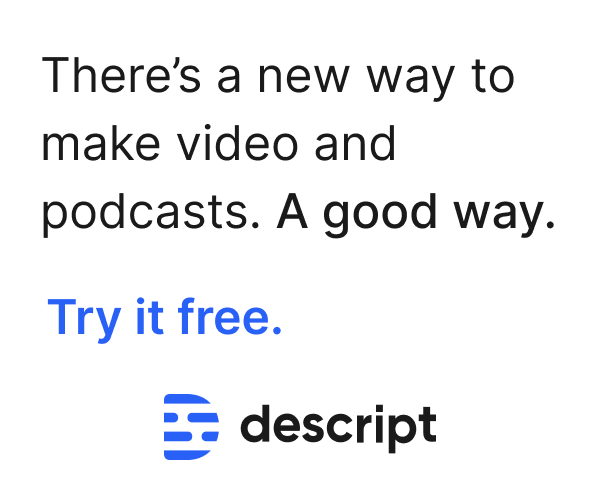

Francisco Inchauste teaches us that the best design is invisible. He enlightens us to how we can learn something from anyone, and to appreciate the people who surround us. He reminds us of the importance of validating our work. He also inspires us to always add value to even the smallest things and to not be afraid to take initiative.
Francisco Inchauste (Mr. Invisible) has an extensive user experience background, with a focus on interaction design. He’s been involved with the Web industry for almost two decades, leading teams and clients—enterprise to startups—on projects ranging from customer brand experiences to complex software applications. He’s the UX Principal at Universal Mind. He’s co-founder of Simplebots, where he creates apps like Rise. He helped start Smashing Magazine’s UX section and still uses his superpowers to help edit books and review articles. He also used to work for the US Postal Service delivering mail on the weekends.
- Secret Identity/Origin Story (2:20)
- Inspiration To Pursue Career In UX (3:43)
- Biggest Superhero (6:26)
- What’s Writing Process Like (9:25)
- Second Career Choice (12:36)
- Biggest Failure (14:57)
- Awkward Testing Story (19:43)
- Design Superpower (22:10)
- Design Kryptonite (22:48)
- Design Superhero Name (24:44)
- Fight For Users (25:38)
- How To Cope With Imposter Syndrome (30:58)
- Future Of UX Design (34:36)
- Habit Of Success (37:27)
- Invincible Resource (39:23)
- Book Recommendation (41:44)
- Best Advice (44:17)
- Most Excited About (48:11)
- Contact Info (52:30)
LINKS
Francisco’s Twitter
Francisco’s Website
Rise App
[ARTICLE] The Perfect Design Tool (Published on User Defenders)
[ARTICLE] What Would Jason (Santa Maria) Do?
[ARTICLE] You Suck At Design (Here’s Why)
[ARTICLE] What Will Our (Future) Interfaces Feel Like?
[RESOURCE] Going to the Library.
[BOOK] The Best Interface Is No Interface by Golden Krishna
SUBSCRIBE TO AUTOMATICALLY RECEIVE NEW EPISODES
Apple Podcasts | Spotify | Pandora | Amazon Music | Stitcher | Android | Google Podcasts | RSS Feed
USE YOUR SUPERPOWER OF SUPPORT
Here’s your chance to use your superpower of support. Don’t rely on telepathy alone! If you’re enjoying the show, would you take two minutes and leave a rating and review on Apple Podcasts? I’d also be willing to remove my cloak of invisibility from your inbox if you’d subscribe to the newsletter for superguest announcements and more, occasionally.
SUPER-CRED
Artwork by Cesar Lemus | Editing by Chris Combs | Music by Wyman Gentry
AWKWARD TESTING STORY
I don’t do as much of that now in my new leadership role. Heard some really good stories within the research we’re doing for a retail store. They kept finding these abandoned shopping carts that were full of groceries. They looked into that and discovered it was because some elderly people in the area would come in just so they could feel a part of society and the culture around them. They just want to feel apart of that, so it’s kind interesting to see really how people think and how that in this case they were just kind of lonely. Makes me kind of sad.
DESIGN SUPERPOWER
Well I like to look at it as basically anything that causes friction for the user that I find and making that disappear. To me that also includes the design itself. So any of the navigation or artifacts on the screen should sort of blend into the background so it’s really kind of trying to guide them and give them only what they need at that moment so just sort of getting rid of those roadblocks.
DESIGN KRYPTONITE
I think there’s two things: I’ll say validation and that’s on a client level and a personal level. You have clients that are excited about certain features, and they want to get right in and just start building those rather than stepping back and going, okay let’s validate this first. And on a personal level I’ve done the same thing, so I know how difficult it is and that’s kind of one of the reasons I built Rise because I wanted to build my own product so I could understand what that felt like. I wanted to do the same things that you see clients do and they say why would you want to do this and that it doesn’t make sense or just going to jumping in but you can’t help it you just get excited about the idea. The idea is that kind of spark. You’re inspired and you just want to go for it, and it kind of comes out at the end–well maybe that wasn’t the best idea. You should’ve validated that first. It is hard to stop and say you know let’s take a moment and kind of evaluate things and do some research and talk to people and figure out if we’re doing the right thing.
SUPERHERO NAME
Mr. Invisible
HOW DO YOU FIGHT FOR YOUR USERS?
It goes back to leading the client. Helping them through the thick of everything–not just writing down a list of the features that they want, but looking at the problems that they are trying to solve and help them find the right things for the users. Mike Monteiro did this talk a little while ago and he talked about making your clients happy. But that’s not what we’re there for. We’re hired to do something great for their customers and their company. Sometimes that’s a different thing than what they think they want. So it’s not about making them happy, but doing the right thing. So I really like that kind of sentiment.
FUTURE OF UX
I will answer that with two quotes that I really like: “The future is already here, it’s just not very evenly distributed.” — William Gibson, And the second is from Michio Kaku: “To our ancestors we will look like wizards, and to us our grandchildren will look like gods.” I think those two quotes really encompass my philosophy on that. If you look around us in the world there’s a lot of simple patterns that you can look at for example, which side of the road people drive on, the metric system, even outlets here vs. Europe and other places in the world. That shows that in certain places the future is already here. So if you look at San Francisco, they have a lot of things going on there and they’re experimenting and doing all this cool stuff like robots in hotels. And then you go to India, and that person on the street is living a completely different life. So I think really the future of UX is about right now and sort of balancing those experiences that are out there in the world and helping kind of equalize what’s out there. It’s about looking at the balance between digital in the physical world so right now we’re seeing a lot of digital native people where screens and technology is just a normal part of life, and they crave that sort of physical tactile interaction. They like to go out and try different kinds of foods and interact with friends in that or vinyl records and books are seeing growth with those things again. So there’s this kind of interesting balance for designers in tying back to that story telling aspect we talked about a little bit before. I think it’s less about what’s under the glass, and what that looks like. As designers, I think we’ll have to look at what’s outside the screen and that is going to be through storytelling with what that kind of user story is, and the full story…not just what’s under the glass.
HABIT OF SUCCESS
I think it’s just trying to get into a good cadence and balance of eye candy and external distractions and ABL (always be learning). Always trying to learn from everything I find and how I try to organize myself and see where I’m failing at that and treat that as sort of a habit the design cycle if you will. I think it’s kind of a never ending cycle, but always trying to learn from that.
BEST ADVICE
So I thought about that and I have three things: One of them one of them I kind of touched on the little bit as far as the teaching aspect.
But I think it’s always appreciating what people have to offer you. This is something that I learned over time. You know you go to work, and you have this kind of expectation of maybe what you should be doing or looking at what it is that someone else is doing. I actually wrote a post about this called “What Would Jason (Santa Maria) Do?“. Because I really looked up to him you know a lot when I was getting more into web design and app design, and it was always like “I should be there” or “I should be doing this”, this guy is doing really cool stuff and you know he’s sitting there in New York or wherever working for a really awesome agency doing this. It kinda caused me to begin to ignore the value of the people around me and what they had to offer to my career. Because as you pointed out, your career and your superpower so to speak are not just from yourself, it’s from what you’ve learned and absorbed from other people. So I think that’s one main point is just to look around you and realize that the people that are around you sitting next to you right now, even if it’s someone that is maybe negative you can learn something from them…maybe learn what not to do right? But you can learn from people around you and appreciate what they have to offer. And they don’t have to have a big name or some kind of high expectation you have for them, they could just be anyone and you could learn something from them. So I think that’s that’s a really important piece of advice for the aspiring designer.
The other thing is to always add value to things. Say someone gives you something something and again this goes back to sort of like this is the way I used to think is I’m just getting this like little part of the project and you feel like you should be able to be of the do more. I think that’s the wrong way to look at. I was wrong to look at it that way. The right way to look at is to say, “okay here’s this thing and I can make it better I can give it back to them and it will be in a better state than when I received it, and I think that’s that’s important thing.
For my last part is just don’t wait to be asked to do something, go ahead and and and take the opportunity to show people and that’s how Rise came about. No one is ever gonna say to you make a really fun thing with gestures and just kind of like really clean design and just have fun with the colors and do whatever you want. No one’s gonna come in and hire you to do that right? You have to go out and do that thing you want to do yourself. I just want to learn how to do it, how does it work to launch an app and what is that process like and was putting this off of your clients use what is like to have to going to go through that whole process of building this product from zero to something more mature. I think that would never happen if I didn’t just go ahead and call Kellen and say “Let’s make an app”. Those three things I think are pretty important.

